SOURCE:
The news of the falling unemployment and the rise in total payrolls in July 2022 came as a welcome relief to the White House. There were cheers all around, mainly because it plays into the story that this is not a recession, despite two consecutive quarters of falling output as measured by the GDP. If it is a recession – what’s in a name? – it’s different from any experienced in a century simply because it has not yet hit that key data indicator.
And yet, there are anomalies both anecdotally and in terms of the macroeconomic data. This week, we got news of both Walmart and Robinhood cutting jobs, plus hiring freezes in the financial industry.
As I’ve written many times, the truly vulnerable positions are not in the areas in which people actually do stuff with real skill but rather in the high-end, six-figure jobs in corporate and nonprofit management that became the stuff of envy during the lockdown years. In these jobs, you could both be “essential,” overpaid, and lounge around in your PJs all day.
For these people, the lockdowns were a breeze, and they never missed a chance to brag about it, completely unaware of how that opinion was grotesquely myopic and disregarding of the plight of everybody else who actually has to work for a living. It is these jobs that are now on the chopping block due to inflation-induced profitability squeezes and the desperate need to shore up the balance sheet.
We need only compare the dramatic inversion of pricing dynamics during the pandemic years. Producers once had it made and balancing the books was nothing but pleasure. Practically overnight, fortunes changed and the producers were hit with rising costs that they have had some trouble in fobbing off on the consumers. It’s a game of hot potato and it’s the industries and workers that thrived so much during lockdowns that now hold the damn thing.
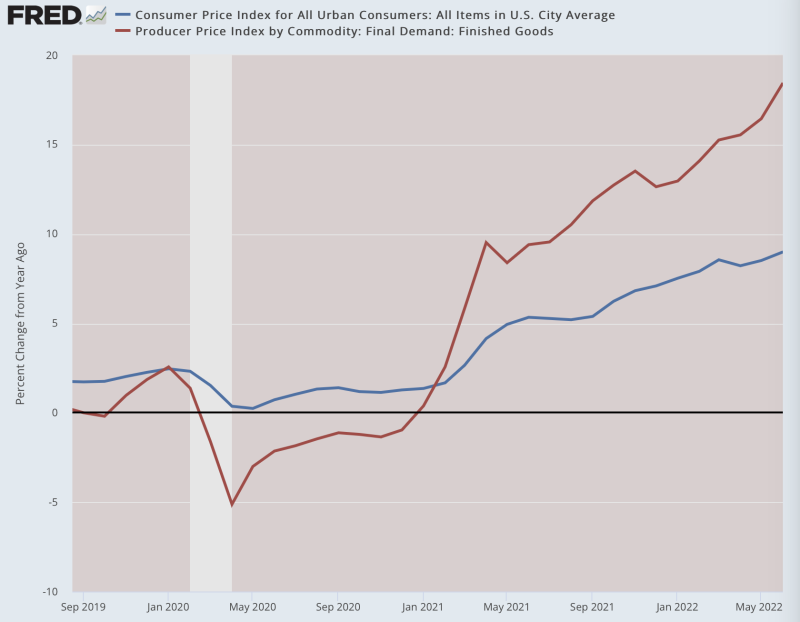
Then you have the problem of wages themselves. They are certainly up in nominal terms. But what can the wages buy? That’s always the question. Expressed in real terms, wages are still falling. They are back now where they were fully three years ago to date, even before the lockdowns happened. That is not progress.
This is the longest decline in real wages on record, and it raises serious questions about the peak and whether that was a wild, credit-fueled bubble. If this were really a healthy market, would we be experiencing this?
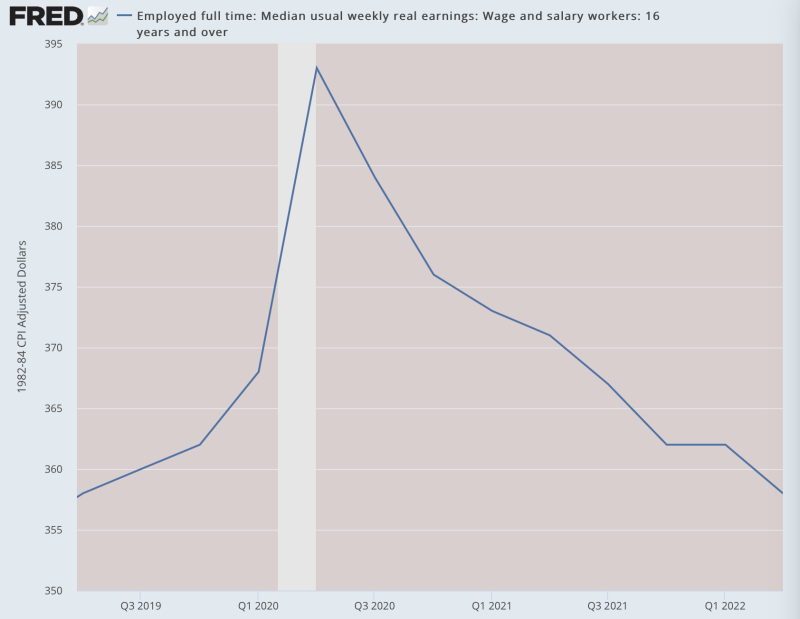
Still, matters get stranger when it comes to labor force participation. It obviously fell dramatically during the lockdowns but the recovery has yet to happen. It is still falling!
This is not reflected in the unemployment rate at all. There are still more than a million people who have gone missing completely, giving us a historically low worker-to-population ratio. It’s hard to avoid the conclusion that generalized demoralization has contributed to this.
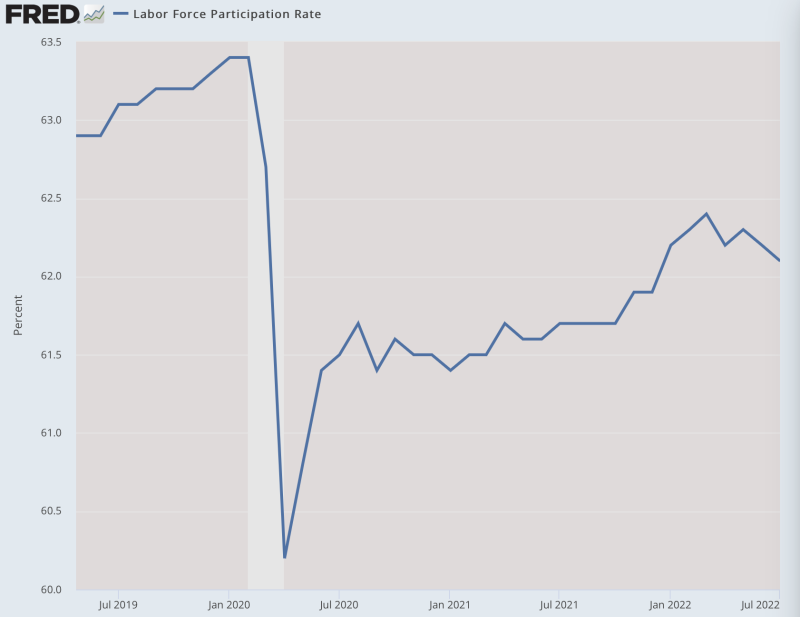
Some of this problem is driven by working moms who cannot find child care. There is a real crisis in this sector. Already overregulated and unnecessarily unenterprising, the childcare sector has yet to recover from lockdowns. The Wall Street Journal publishes this fascinating chart on the current plight of moms who have tried to recover the two-paycheck lifestyle.
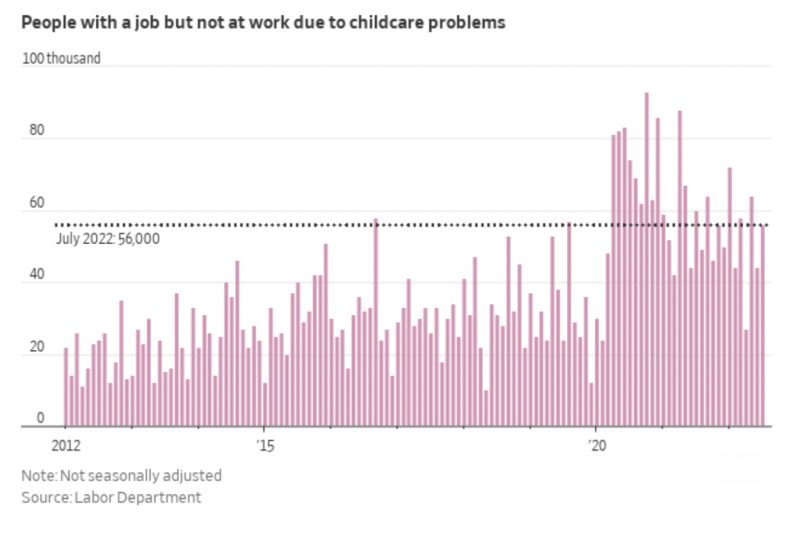
Other anomalies can be explained by a deeper dive into just the sort of jobs people are leaving and getting, as Zerohedge points out. “Fewer people working, but more people working more than one job, a rotation which picked up in earnest some time in March and which has only been captured by the Household survey…. since June, the US has lost 141K full-time jobs, 78K part-time jobs, while adding a whopping 263K multiple jobholders.”
I’m especially intrigued by this chart also produced by the Wall Street Journal that reveals the sector-by-sector coming and going. You can see here how the lockdowns drove a great migration among those who could move from physical work to Zoom work, along with the warehouses necessary to deliver the stay-at-home crowd their groceries. The declines were in food and accommodations, as one might expect.
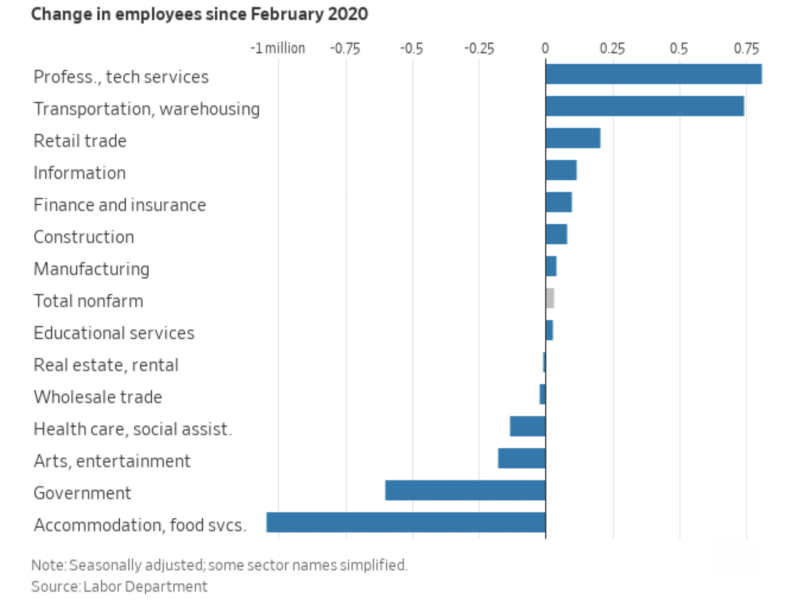
But now we see how and why the problems are developing among producers, which directly affects the future of employment. The more we look for historical parallels to the current moment, the more we come up dry. And perhaps this should not be surprising.
These troubles came about with the beginnings of lockdowns based on the outrageous presumption that “the economy” could be turned off and then turned on again. In so doing, governments privileged some and harmed others, creating a caste system based on skills and technologies, and then, eventually, vaccine status.
In truth, the economy is no more and no less than the choices of human beings. The pandemic response hit the right of choice above all else. Everything we are seeing now reveals the consequences of such a brutal approach to pandemic management that ended up achieving no net gains for health. Quite the contrary.
No comments:
Post a Comment
Note: Only a member of this blog may post a comment.